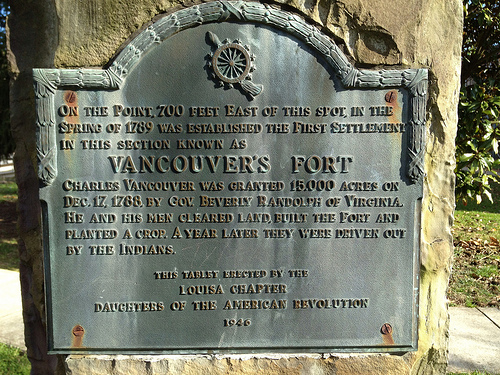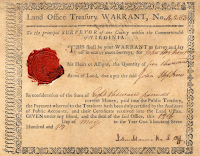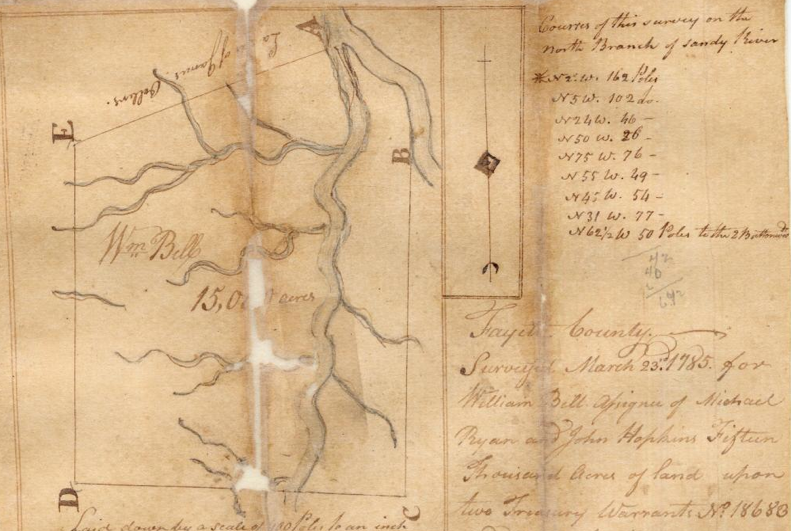 |
| Vancouver’s Fort Monument – Louisa, Ky. |
Seven hundred feet east of the Lawrence County courthouse lawn was established in 1789 the “first settlement in this section.” Called Vancouver’s Fort (or the Big Sandy Blockhouse), the establishment survived only a year. It would take two more attempts before the lands could be permanently settled in what would become Louisa.
 |
| One of Vancouver’s Land Grants |
Charles Vancouver, originally of London, England, acquired two land grants for a combined 15,000 acres along the Big Big Sandy River where the Tug and Levisa forks meet. At the time, this “section” was the easternmost reaches of Fayette County, Virginia – part of Virginia’s Kentucky District. The lands are reputed to have been surveyed by George Washington himself. With his grants, Vancouver sought to secure the men necessary to establish a fort through advertisements in the Kentucky Gazette. Little record of Fort Vancouver existed for several years after the advertisements ceased.
Then in 1838, the sworn story of John Hanks was taken and recorded for posterity providing a record for what happened to Vancouver’s Fort. As quoted in Judge Charles Kerr’s History of Kentucky:
I was employed by Charles Vancouver in the month of February, 1789, along with several other men, to go to the forks of Big Sandy River, for the purpose of settling, clearing and improving the Vancouver tract, situated on the point formed by the junction of the Tug and Levisa Forks, and near where the town of Louisa now stands. In March, 1789, shortly after Vancouver and his men settled on said point, the Indians stole all their horses but one, which they killed. We all, about ten in number, except three or four of Vancouver’s men, remained there during the year, and left the next March, except three or four men to hold possession. But they were driven off in April, 1790, by the Indians. Vancouver went East in May, 1789, for a stock of goods, and returned in the fall of the same year. We had to go to the mouth of the Kanawha River, a distance of eightyseven miles, for corn, and no one was settled near us, probably the nearest was a fort about thirty or forty miles away, and this was built maybe early in 1790. The fort we built consisted of three cabins and some pens made of logs, like corn cribs, and reaching from one cabin to the other.
We raised some vegetables and deadened several acres of ground, say about eighteen, on the point, but the horses being stolen, we were unable to raise a crop.
(Signed) John Hanks.
 |
| Survey of Vancouver Land Grant |
The Fort Vancouver blockhouse survived but a year, suffering from both Indian raids and the difficulties of farming. The settlement was replaced a few years later by another short-lived settlement called Balclutha. A Philadelphian, Frederick Moore, laid out a town at the confluence of the Tug and Levisa forks in 1815. By 1818, the community was deemed “substantial”and would become the seat of the newly formed Lawrence County in 1822.
Sources: Kentucky Encyclopedia; Kentucky’s Last Frontier; Kerr’s History of Kentucky; KY Secretary of State
